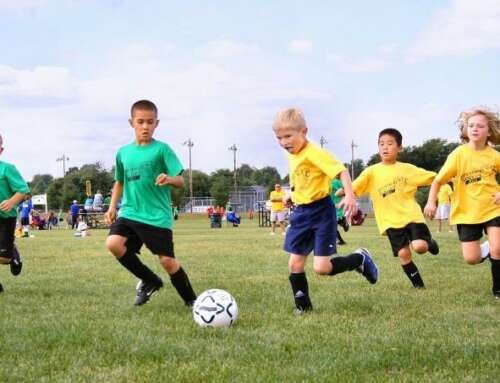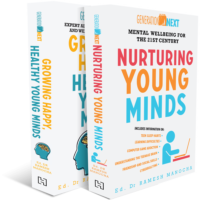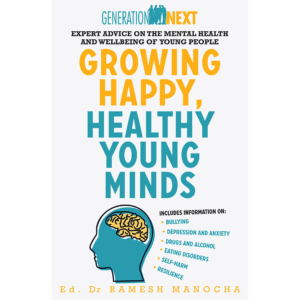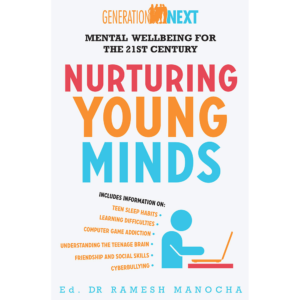Two recent releases have prompted this article: The Netflix series Adolescence and the 2025 Reith Lectures from the BBC on Violence. Both are highly recommended. In the Reith Lectures, forensic psychiatrist, Dr. Gwen Ashead, outlines seven factors that give rise to the violent mindset. While there is no one type of violent person, these factors act like numbers in a combination lock: one factor alone may not be sufficient to predispose a person to violent acts but the presence of all seven increases the probability dramatically.
As someone who has worked therapeutically with violent, extremist and aggressive young people, I have added an eighth and nineth factor from my own research and experience.
In the wake of every act of youth violence— whether it’s a schoolyard bullying or assault, a toxic online campaign, a home invasion or a tragic relationship breakdown—there’s an understandable rush to ask: Why did this happen? While no single explanation suffices, there are psychological, cultural, and relational factors that create fertile ground for violence.
This article explores nine key predisposing factors, each is paired with an example and a research-based antidote or therapeutic approach. The aim is not only to understand, but to intervene early—before intense emotion becomes destructive action.
1. Mental Rigidity in Social Situations
A black-and-white view of the world, lack of nuance, and low curiosity about others’ perspectives.
Example: In To Kill a Mockingbird, the rigid racial assumptions of the town underpin the wrongful conviction of Tom Robinson. There’s no curiosity—only categories.
Antidote: Theory of Mind & Perspective-Taking. Teaching kindness and empathy through literature, debate, drama and structured group reflection helps teens tolerate ambiguity. Role plays and ‘walk in their shoes’ activities build flexibility in understanding social intentions and different perspectives.
2. Hyper-Individualism
A belief in radical self-sufficiency, eroding the sense of mutual responsibility.
Example: Modern mass shooters often see themselves as lone crusaders or avengers, disconnected from any communal moral compass.
Antidote: Belonging Projects where students contribute meaningfully to the school or wider community foster CPR- connecting, protecting and respecting one another. Programs that frame success in collective terms reduce isolating individualism. An emphasis on community rather than hierarchy.
3. A Personal Moral Rulebook Disconnected from the Common Good
This arises when adolescents create intensely narrow, internal moral systems without incorporating broader values or shared ethics.
Example: Gang culture often creates alternate moral codes—loyalty to the group over right and wrong, revenge is viewed as justice.
Antidote: Philosophical Ethics and Character Education. Posing tough moral dilemmas—helps teens develop ethical reasoning that incorporates the social contract and public good. Moral philosophy becomes a mirror, not a weapon. I am a total fanboy of the work of Michael Sandel as an example.
4. Sense of Entitlement
A belief that one deserves attention, affection, or power without reciprocity or respect.
Example: Some high-profile incel-related attacks stem from a toxic form of romantic entitlement—’I am owed love and desire, and rejection is an injustice.’
Antidote: Teaching teens how to cope with jealousy, disappointment, and to regulate unmet needs helps reduce reactive rage. Boundary-setting and consent education reinforce that no one is owed access to others.
5. Denigration of Vulnerability and Suffering
Viewing emotions, empathy, or weakness as contemptible. Viewing victims of violence as ‘weak’. Example: In many bullying cultures, the most aggressive are seen as ‘strong’ and celebrated while sensitivity is mocked—creating a toxic hierarchy.
Antidote: Trauma-Informed Education + Emotional Literacy. When schools normalise expressions of emotion and model kind responses and contributions, vulnerability becomes strength.
6. Dehumanisation
Seeing others as less than human removes moral restraint against harm.
Example: In the Rwandan genocide, Tutsis were called “cockroaches” in media broadcasts—language that preceded mass violence.
Antidote: Intergroup Contact + Storytelling for Empathy. Programs like Facing History and Ourselves show how prejudice and propaganda dehumanise—and invite students to rehumanise through stories and relationships across difference.
7. Self-Deception and Belief in Disinformation
Holding tightly to false narratives—especially those that justify aggression.
Example: The January 6th Capitol Hill riots were fuelled by deeply held (and false) beliefs that democracy had been overthrown.
Antidote: Media Literacy + Metacognition Training. Helping teens to question sources, recognise bias, and think about their own thinking reduces susceptibility to manipulation. Projects like News Literacy Project or classroom debates that switch sides build cognitive flexibility.
8. Projective Identification (Blame-Shifting from Poor Self-Concept)
Disowned parts of the self—shame, insecurity, weakness—are projected onto others, who are then blamed and targeted. This is seeing the worst of ourselves, in other people.
Example: In Lord of the Flies, Piggy becomes the scapegoat because he reflects the boys’ own vulnerability and fear.
Antidote: Self-Compassion + Identity Integration. Narrative therapy and expressive arts help teens integrate both light and shadow sides of their identity. Kristin Neff’s self-compassion protocols reduce shame and reactive judgment.
9. Intensity — All-or-Nothing Thinking in Relationships
Emotional fusion, control, and desperation—often tied to fragile identity and fear of abandonment.
Example: The murder of Lauren Astley by her ex-boyfriend illustrates how rejection in adolescence can trigger violence when identity and worth are entangled with control.
Antidote: Relationship Skills Education and emotional regulation training, distress tolerance, and interpersonal effectiveness. Relationship education helps teens recognise red flags and define respect.
Conclusion: Prevention Through Insight
Violence is never inevitable. When we understand these nine risk factors—not just as red flags but as invitations for deeper connection, reflection, and support—we shift from punishment to prevention.
Judging and punishing are easy (and ineffective). What creates real change is understanding and intentionally promoting caring, kindness and peace.
While social media is easy to target as the culprit, it is a contributor rather than a sole cause. This is not just a matter of increased oversight of social media, we need to deepen our collective capacity to build, contribute to, and maintain relationships.
We also need to help ourselves and our young people develop the skills of relationship repair. These are the skills that are needed by us all, to resolve tricky conversations.
Whether you’re a teacher, therapist, parent, or mentor, consider this:
Which of these patterns have you seen quietly growing in your students or your community?
And more hopefully:
Which antidote can you begin to weave into your family or daily work with young people— starting today?
More information
Andrew’s website http://www.mylearningstrengths.com has helped over 200,000 young people discover their learning strengths.
and www.andrewfuller.com.au
Book for Parents
- Neuroadvantage: The Strengths-Based Approach to Neurodivergence (available in June 2025)
- Tricky Behaviours
- The A to Z of Feelings
- Unlocking Your Child’s Genius (Amba Press)
Book for Teachers
- Tricky Conversations
- Guerilla Tactics for Teachers
- Tricky Behaviours
- Tricky Teens
- Unlocking Your Child’s Genius
- Neurodevelopmental Differentiation- Optimising Brain Systems to Maximise Learning (Amba Press)







